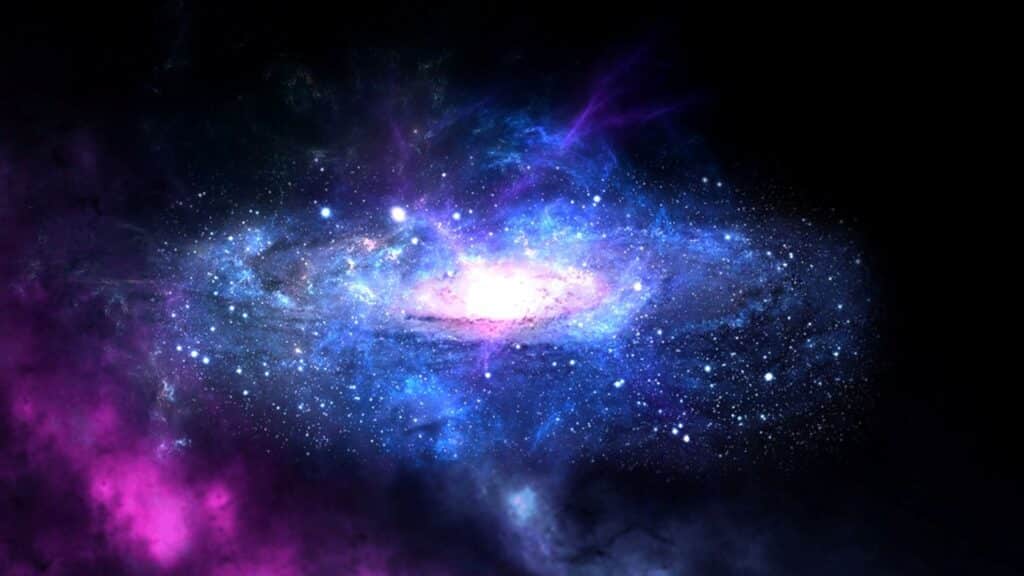“Dark energy,” which drives the universe’s accelerating expansion, has long been believed to be a “constant” that does not change over scales of billions of years.
However, research conducted at Harvard University in the United States has suggested that dark energy may be changing slightly over time.
If the “cosmological constant” is not permanent, the current standard Lambda CDM (Lambda CDM) model will require a major reexamination, and our understanding of the “image of the universe” may also be rewritten.
At first glance, this seems like a grand theoretical theory, but in reality, the latest observational data and the frameworks of string theory and supergravity theory are beginning to support this “changing dark energy” scenario.
Does dark energy really fluctuate over time?
Is there a gradient of dark energy?
When people first heard the term dark energy, many were confused and excited about the idea that it was an unidentified source of energy that was causing the accelerating expansion of the universe .
It all began with detailed observations of distant supernovae in the late 1990s.
When the light from a supernova was considered the “standard light for the brightness of the universe” and its distance and speed were examined, it was discovered that the universe is expanding at a much more rapid pace than previously thought, causing an uproar in the world of astronomy and physics overnight.
Einstein once introduced a term called the “cosmological constant” into his theory, but was unable to connect it well with observations, and is said to have lamented that it was “his biggest mistake.”
However, supernova observations have provided clear support for the “dark energy = cosmological constant theory,” and this concept, which had once been treated as a “failure,” has once again come into the spotlight.
Dark energy has thus come to be widely accepted as a stationary form of energy that permeates the vacuum almost uniformly – a central element in the so-called ΛCDM model.
However, in recent years, doubts have been raised again about whether this dark energy really is unchanging.
To put it in an analogy, we have previously assumed that the bottom of the giant pool known as the universe is completely flat, but the new theory suggests that it may actually have a slightly sloping floor – in other words, there may be subtle changes in the distribution of energy depending on time and place.
If dark energy is moving slightly downhill, this could lead to more diverse scenarios for the speed of the universe’s expansion and even its future fate than we previously thought.
Behind these ideas lie mathematical approaches from cutting-edge research such as string theory and supergravity theory.
When trying to construct the vacuum energy very precisely, discussion has begun to emerge that maintaining a completely flat state (constant) is rather a special case, and that it may be more natural to have a slightly inclined potential.
Furthermore, in terms of observation, an increasing number of studies have reported that when examining highly accurate data such as measurements of the cosmic microwave background radiation (CMB) and analyses of the luminosity distribution of distant galaxies, “there are signs that dark energy is changing very slightly.”
Although the evidence is not yet complete, we are beginning to find observational results that are difficult to explain by simply fine-tuning the ΛCDM model, and interest in “time-varying dark energy” is growing.
Brute force search for dark energy: The true nature of the “slope” discovered in virtual space
Even if we wanted to determine whether dark energy actually changes over time, we couldn’t measure it in a beaker in a lab.
The researchers then conducted a “virtual experiment” using theoretical calculations and numerical simulations .
Specifically, they combined multiple scalar fields dealt with in string theory and supergravity theory, as well as “flux” (a quantity that quantifies how fields wrap around), and other parameters to brute-force checks to see how dark energy behaves while changing every possible parameter.
This work makes use of mathematical tools such as the so-called “no-go theorem” and “Swampland condition” to shed light on questions such as “Can a truly stable dS (de Sitter) vacuum be created within the framework of string theory?” and “Wouldn’t a state in which dark energy has a slight gradient make more sense?”
After comprehensively investigating cases including even considering compactification in higher dimensions and cases in which multiple scalar fields interact, it was found that extremely special conditions are required for dark energy to stabilize as a completely constant, and that a slight tilt in the equation may actually make contradictions less likely to occur.
It has also been suggested that this subtle “tilt” could gradually affect the rate at which the universe expands and the formation of structure over time.
In particular, the focus of research has been on how to deal with constraints derived from relativity, known as the “strong energy condition (SEC)” and the “null energy condition (NEC).”
These constraints usually place strict restrictions on gravity theory, but when attempts were made to adjust the parameters or relax some of the conditions, it became clear that there were cases in which a metastable dS vacuum could not be created, or in which it became unstable.
On the other hand, the results showed that placing dark energy in a “slightly tilted” state would result in the theory fitting together and reduce unnatural fine-tuning of parameters.
This series of research results suggests that the “time-varying dark energy” scenario is no longer just a hunch, but is evolving into something that actually has theoretical support.
If traces of this “slight tilt” are found in the near future through ultra-high-precision observations of the CMB or large-scale surveys of distant galaxies, a new picture of the universe that replaces the ΛCDM model that we have taken for granted may suddenly become more realistic.
Towards a new era of cosmology: Can we grasp the gradient of dark energy?
The view that dark energy changes over time has suddenly attracted attention because it seems natural from the perspective of string theory, where constructing a metastable dS vacuum is considered difficult.
If dark energy were to fluctuate slightly downhill, the ΛCDM model we are familiar with would be considered a very good approximation, but not perfect.
In other words, over time, small changes may occur in the rate of acceleration and the formation of galaxies, and the future of the universe may be revised from the previously thought of “constant acceleration” to “a flow in which the acceleration gradually changes.”
In fact, it is expected that the amount of observational data will increase dramatically in the future as high-sensitivity space telescopes and next-generation CMB observation projects are put into operation.
If a gradient of dark energy really exists, it may appear as a “tiny deviation” in the results of such a vast amount of observations.
For example, detailed data such as the distribution of galaxies, gravitational lensing, and the growth patterns of large-scale structure in the universe may show characteristics that are difficult to explain within the framework of the constant Λ.
Of course, there are also strong views that the universe can still be explained even if dark energy remained completely unchanged, so the debate will never be settled in one direction.
However, actively searching for “variable dark energy” holds great promise for new theoretical insights and observational discoveries.
If future observations support this hypothesis, cosmology textbooks may have to be significantly rewritten.
Furthermore, taking into account the time dependence of dark energy will have an impact on theories about the beginning and end of the universe, and may even completely revamp scenarios ranging from inflation to the end of the universe.
Looking at this from another perspective, this means that cosmology is entering a new stage.
While ΛCDM has been a huge success as the standard cosmological model, now that observations are becoming increasingly detailed, it also represents a golden opportunity to take a step forward in our understanding of dark energy.
By combining string theory, supergravity theory, cutting-edge numerical simulations and precision observations, we may be able to find the answer in the not-too-distant future as to whether or not “dark energy rolling down a slope” really is supporting our universe.

